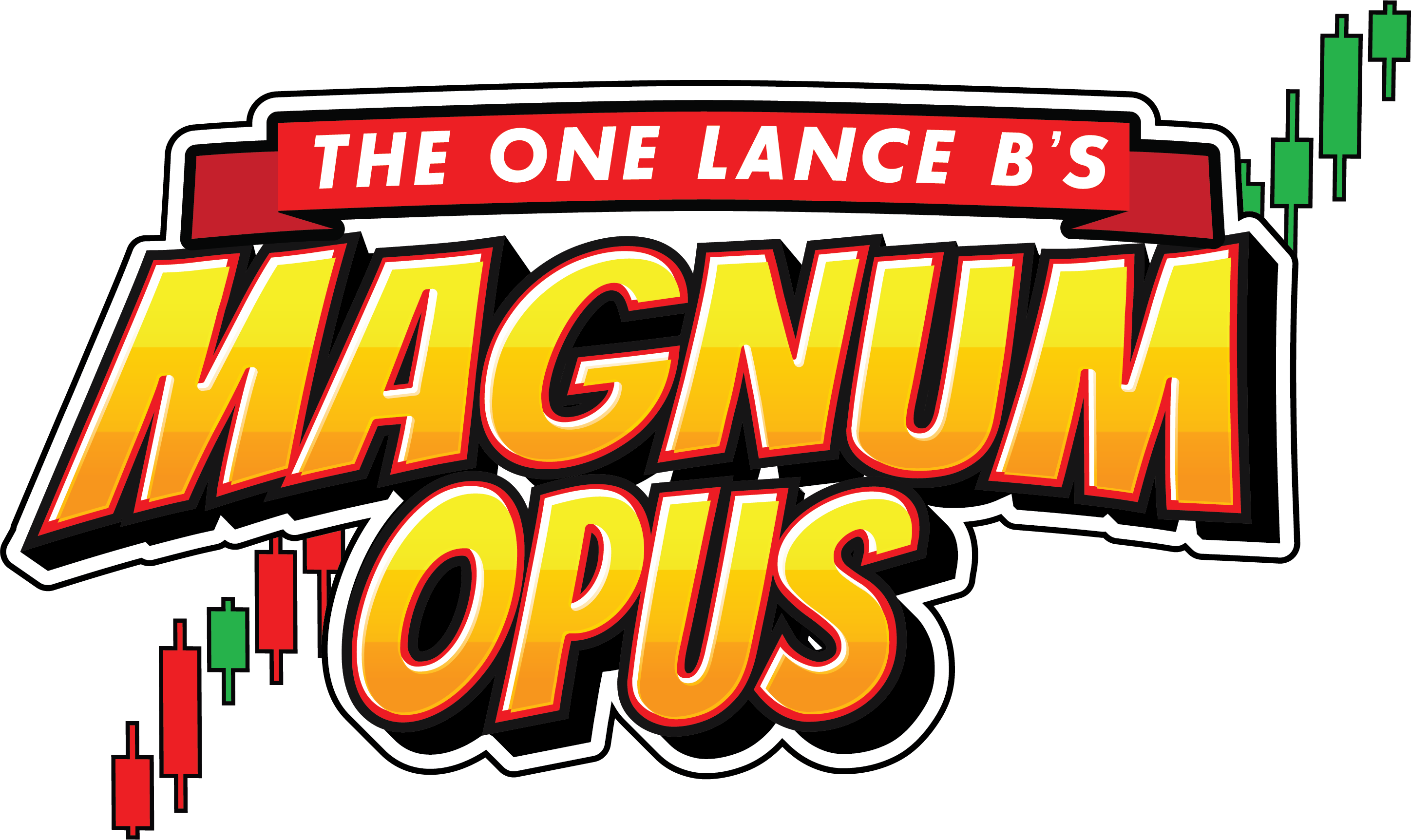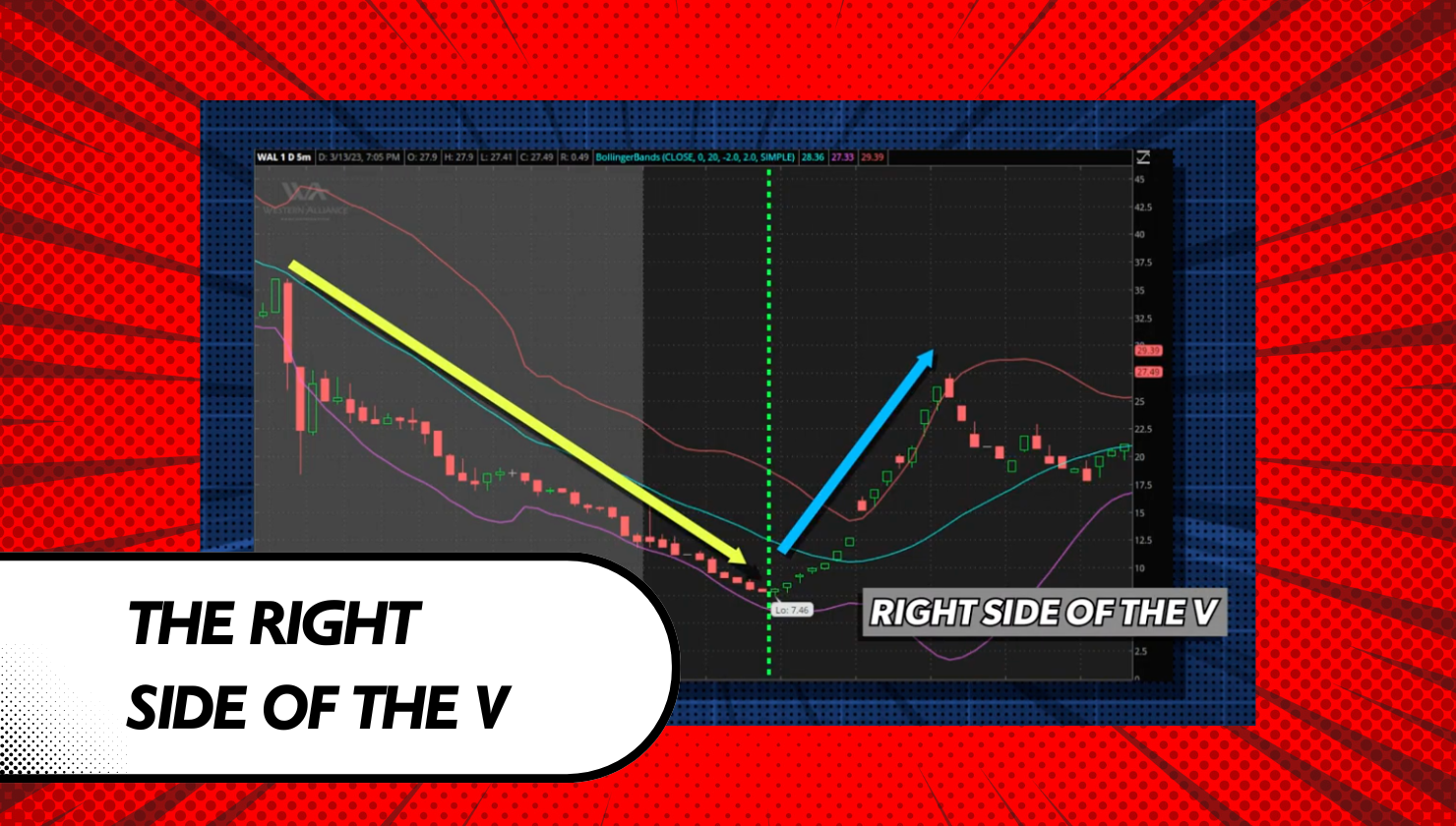One of the biggest breakthroughs in my trading career came when I deeply internalized a deceptively simple yet powerful concept: the right side of the V. This idea, which has resonated with thousands of traders, emphasizes that the same price does not always equate to the same expected value (EV) at different moments in time. Understanding this concept transformed how I approached trading, allowing me to risk less, stress less, and paradoxically—make more.
Many traders fall into the trap of assuming that if a stock is trading at a certain price now, that price will always carry the same expected value at different moments in time. This is one of the biggest fallacies in trading. Let’s explore why this is incorrect, how applying this insight can change your trading strategy, and why it is crucial to refine your entries based on the evolving nature of the market.
The Turning Point: My Trading Epiphany
Early in my journey, I found myself constantly fighting trends, trying to anticipate reversals too early, and taking unnecessary heat on my positions. I was sizing in aggressively before the market had confirmed a shift in direction, leading to unnecessary stress and significant drawdowns. That’s when I started asking myself: How can I reduce stress, even if it means making less money?
What I discovered was a counterintuitive truth: Waiting for the turn not only reduced my stress but also improved my expected value, allowing me to scale into trades more efficiently. I no longer had to endure excessive drawdowns on my positions. Instead, by entering after confirmation, I could increase my size and improve my risk-adjusted returns.
The right side of the V was my key to unlocking this approach. But what does it mean, and why does it work?
The Right Side of the V Explained
The core principle behind the right side of the V is that price alone doesn’t dictate expected value—context does. To simplify, let’s consider the analogy of poker.
Imagine watching a poker game on ESPN. A player starts with a hand that has a 40% probability of winning. As the game progresses, new cards are revealed, and suddenly, that same hand’s probability of winning jumps to 80%. The hand itself hasn’t changed—the context has. The odds have shifted based on new information.
Trading works the same way. Price is just a number. What matters is the market structure, momentum, and positioning. A stock at $50 while in a strong downtrend is not the same as a stock at $50 after confirming a reversal. The odds of success shift based on how the price action has developed, and your trade decisions should reflect that.
Left Side vs. Right Side of the V
To better illustrate this, let’s break down the two sides of the V:
Left Side of the V: Catching a Falling Knife
- A stock is trending downward aggressively.
- Traders try to “call the bottom” and anticipate a reversal before it has happened.
- No clear risk-defined stop exists, increasing the chance of getting stopped out repeatedly.
- Win rates tend to be lower, and drawdowns can be significant.
Many traders make the mistake of scaling in too early on the left side of the V, absorbing unnecessary pain before the actual turn occurs. This often leads to frustration and larger-than-necessary losses.
Right Side of the V: Trading with Confirmation
- A stock has reversed and begun to show signs of stabilizing.
- A clear stop level exists (e.g., a recent low or a moving average break).
- Probability of success improves as you’re trading with the new trend.
- Expected value (EV) is significantly higher because your risk is well-defined, and momentum is in your favor.
By waiting for the confirmation of the turn, you can size in more aggressively with less risk, making your trades more efficient and profitable.
Practical Application in Different Market Scenarios
Mean-Reversion Trading
When a stock is plummeting, many traders attempt to catch the bottom without waiting for confirmation. However, if you wait for the right side of the V—where the stock has turned and started reclaiming key levels—you significantly improve your chances of success.
Breakout Trading
Breakouts are another great example of why price alone does not dictate expected value.
- At Point A, a stock is holding tight against resistance and breaks out cleanly, offering a high-probability trade.
- At Point B, the breakout attempt has failed, and the stock has pulled back to retest prior resistance. Here, the risk-reward is already deteriorating.
- At Point C, the stock makes lower highs, showing signs of weakness. Yet, many traders still convince themselves they are getting the “same price.”
But the expected value is NOT the same. A is better than B, and B is better than C. Recognizing this hierarchy is crucial for improving trade selection and position sizing.
Breaking News Events
A similar pattern emerges with breaking news trades:
- Point A: The initial reaction to the news, when momentum is at its highest.
- Point B: A pullback occurs, signaling that enthusiasm is fading.
- Point C: The stock struggles to regain momentum, yet some traders buy in, mistakenly assuming it carries the same opportunity as A.
By understanding that not all price levels are created equal, you can avoid common traps and focus on the trades with the highest expected value.
The Importance of Selectivity
One of the biggest misconceptions traders have about this concept is applying it indiscriminately. Some assume that buying any stock after a slight bounce means they are following the right side of the V. This is incorrect.
The key is selectivity. The best setups occur in stocks with:
- Large, extreme moves (multiple legs lower or higher).
- Strong volume and momentum.
- A clear confirmation signal (trend break, moving average reclaim, prior high/low break).
If you find yourself taking many small, meaningless trades and getting chopped up, you’re not being selective enough. The right side of the V isn’t a magic bullet—it’s a principle that needs to be applied intelligently to high-quality setups.
Final Thoughts
Understanding the right side of the V is one of the most important concepts in trading. Recognizing that the same price can have different expected values at different times allows you to:
Trade with confirmation instead of guessing.
Reduce stress and unnecessary drawdowns.
Increase size when the odds are in your favor.
Improve risk management and long-term profitability.
Internalizing this concept takes time. If it doesn’t fully click today, keep reflecting on it. Study charts, analyze past trades, and recognize patterns. The more you apply this principle, the more it will elevate your trading.
So next time you find yourself itching to enter a trade, ask yourself: Am I on the right side of the V?





